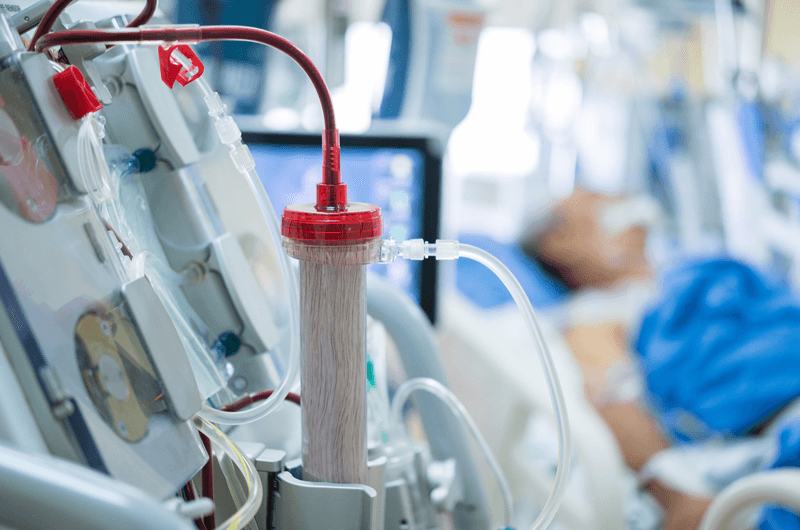Kidney disease is a growing concern among the U.S. people. As per the Centers for Disease Control and Prevention, 10% of adults (more than 20 million people) in the United States may have Chronic Kidney Disease (CKD) with varying levels of seriousness. The chances of having CKD increases after 50 years of age and is most common among those who are older than 70 years of age. Growing prevalence of CKD increases the number of dialysis patients. The New York Times reports that Texas prison officials are struggling to deal with the rising dialysis costs with more inmates. The total dialysis cost spans over staffing costs, physicians’ fee, salary, costs associated with laboratory and medications, cost of hospitalizations and so on.
Early Diagnosis
Early identification and intervention of potential CKD cases may slow down the progress or even reverse the process of kidney failure. If the kidney disease is diagnosed early enough, physicians can advise appropriate medication, diet modifications and exercises for patients, which may slow down the progression of kidney disease to CKD and start of dialysis. With early education, patients can have a better understanding of their situation and manage other co-morbidities including hypertension and diabetes more effectively. This will lead to fewer hospitalizations and improve the quality of their life.
Early Referral
A 2007 study on dialysis reimbursement revealed that the key factor that influences dialysis care cost is the timing of referral to the nephrologist. If the patients are referred to a nephrologist late or must urgently initiate dialysis with no planned access, they will get sicker, require longer hospitalizations and may have to start on expensive Hemodialysis. If the patients are referred earlier to the specialist, it will give an extended time before starting the Renal Replacement Therapy (RRT). During that time, it is possible to plan the access and educate patients about their treatment choices. This approach is found to be effective in reducing hospital days. It was also found that patients getting pre-dialysis modality education are more likely to choose Peritoneal dialysis (PD) over Hemodialysis. In this way, early referral and planned start leads to cost savings and improved survival.
Other Alternatives
Kidney transplant is a better alternative for dialysis since it has higher survival rates and helps the patients to lead a normal life as there would be no dialysis. Although kidney transplant is an expensive procedure, it will prove to be less costly than long-term dialysis treatments. Even though kidney transplant is a good alternative, a referral from a dialysis center is essential for the transplant and the patients should be informed about the risks and benefits of transplant. Also, patients who receive kidney transplant must take immunosuppressive drugs and Medicare will only play for these drugs for 36 months since the transplant. Healthcare experts recommend providing life coverage for these medications as it will cause substantial cost savings to Medicare and reduce the number of patients who must return to dialysis. However, researches are going on to find a cheaper alternative to dialysis. Recently a group of researchers from Japan found a new nanofiber mesh as a cheap and wearable alternative to dialysis.
CMS Payment Increase for Dialysis Clinics
At the end of 2013, the Centers for Medicare and Medicaid Services (CMS) introduced 12 percent cut for dialysis payments over the next several years as a measure to reduce dialysis costs. Many dialysis facilities are facing intense economic hardship owing to this deep cut along with HIPAA requirements of security and IT upgrades. On July 2, CMS proposed a rule to increase the payments for dialysis facilities by 0.3% to 0.5% while the rural facilities and ESRD facilities in Puerto Rico and the Virgin Islands will receive a decrease of 0.5% and 3.6% in estimated payments respectively. Though this rule gives a little relief for dialysis clinics, several facilities still face financial burden.
If these clinics want to improve their returns under prevailing legislation on reimbursements, they need to devise dialysis-specific billing solutions and ensure effective management of revenue cycle. With dialysis specific billing software integrated to clinical EHR, it is possible to report all charges and orders instantly and automatically, which will bring maximum revenue. Seeking help from coding experts can reduce errors in claims, avoid claim denials and ensure receiving correct reimbursement within less time.




